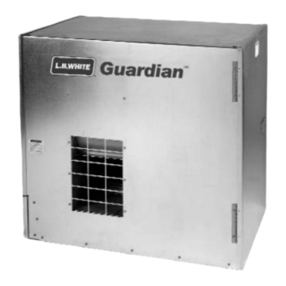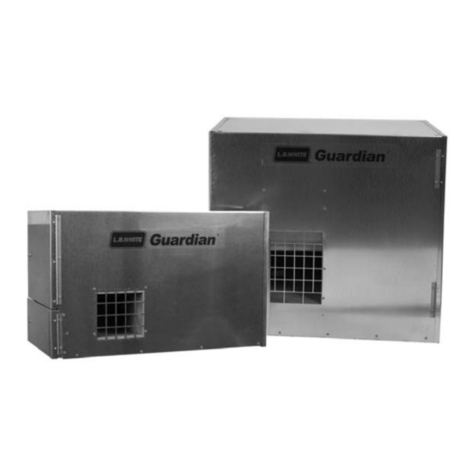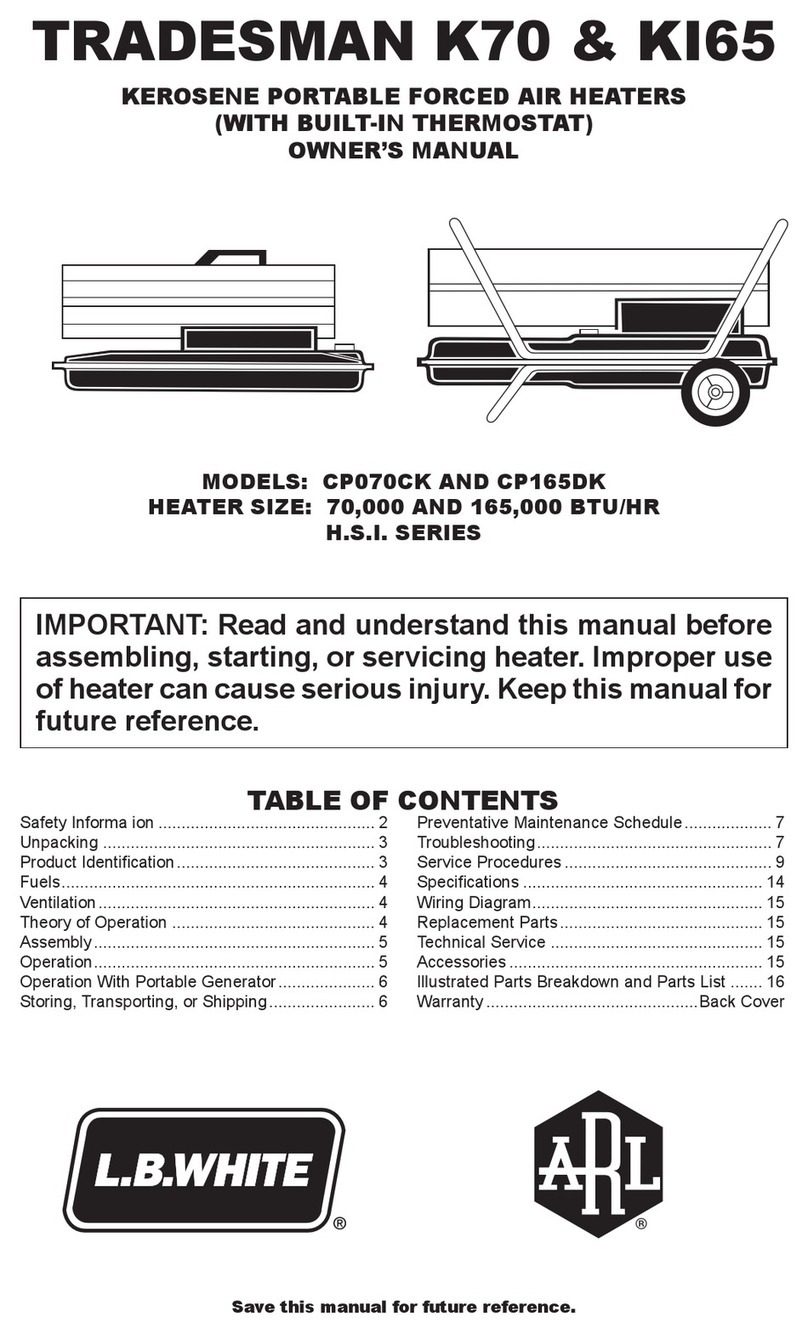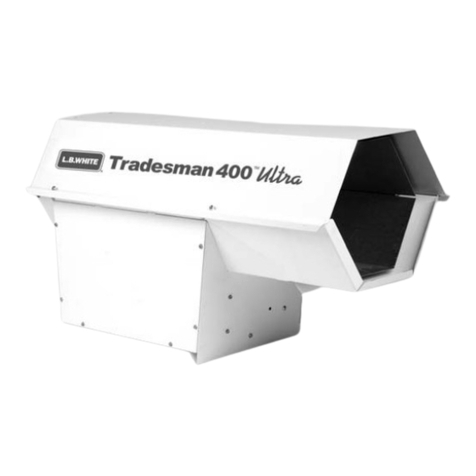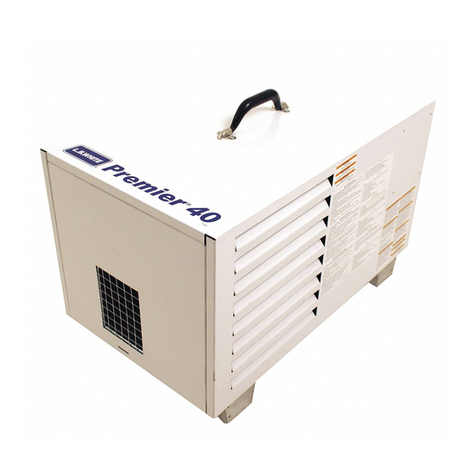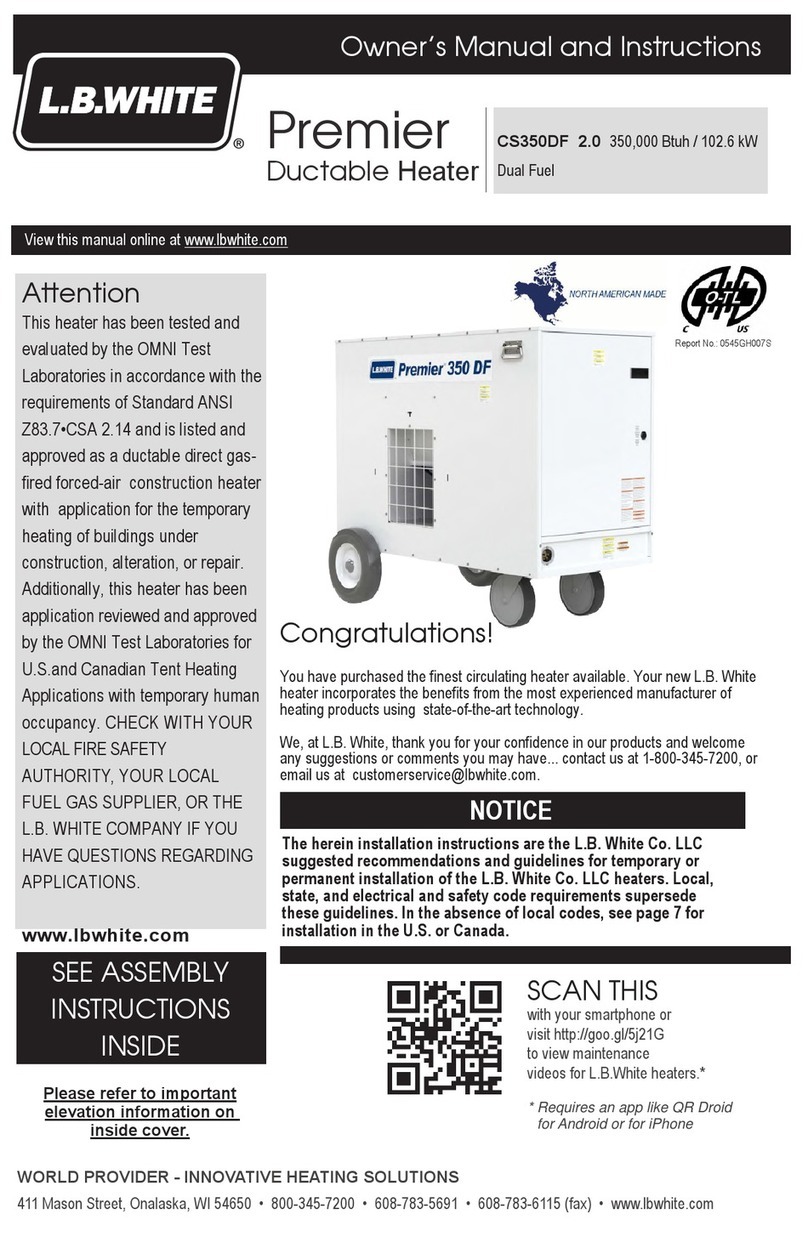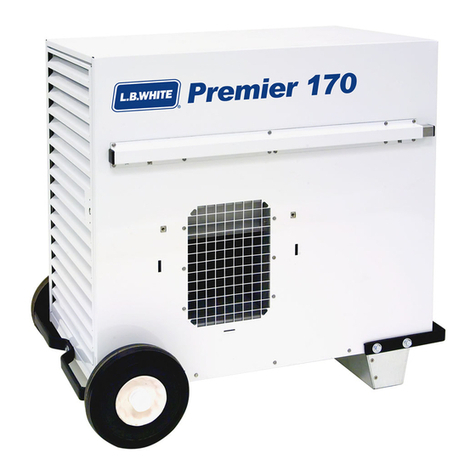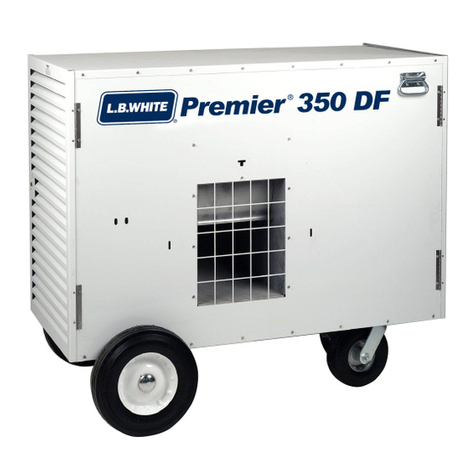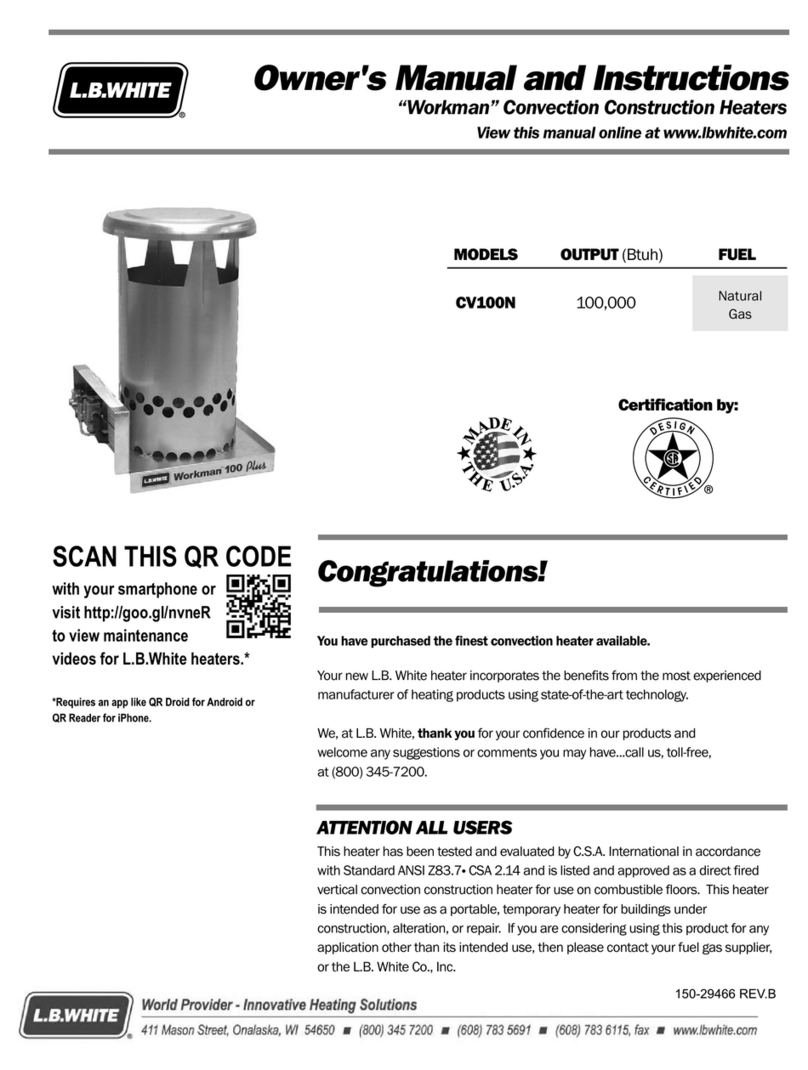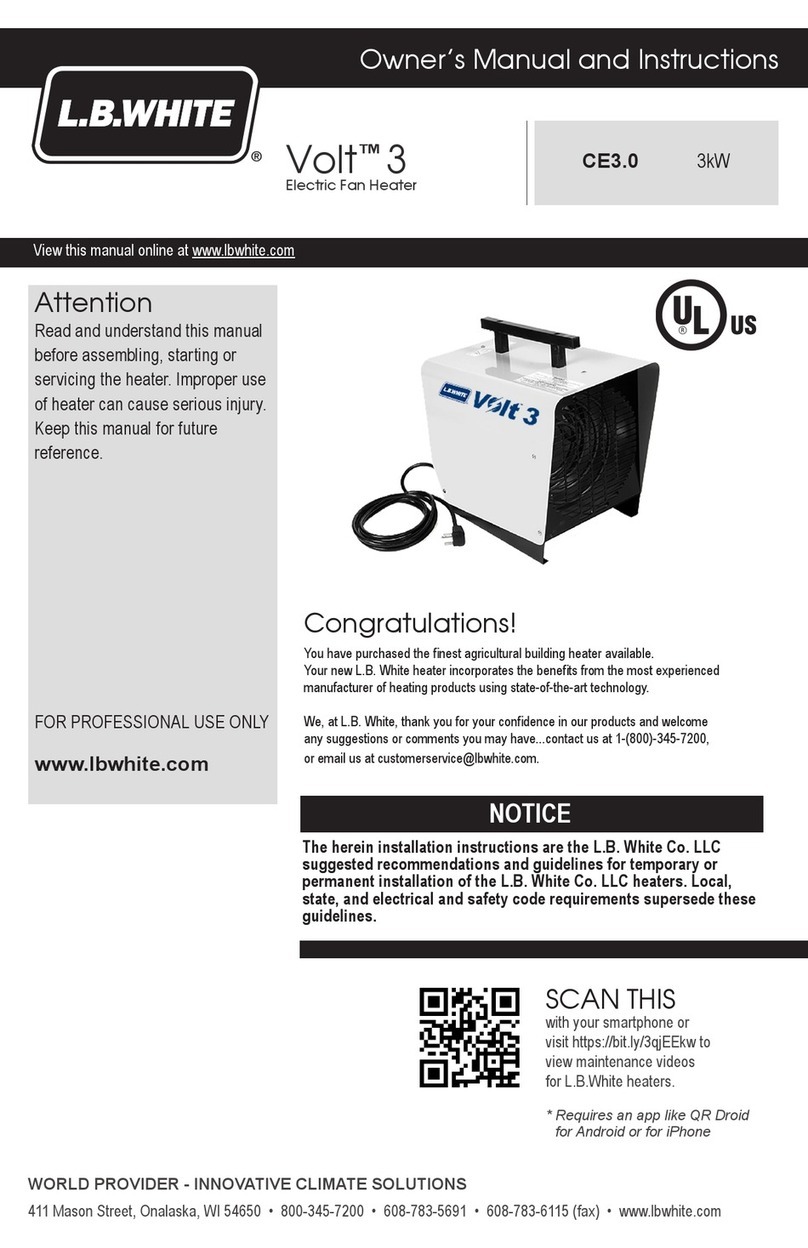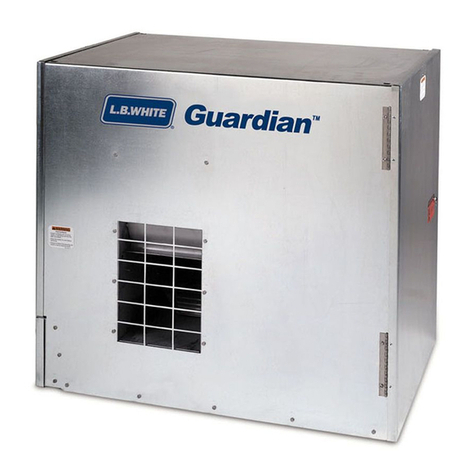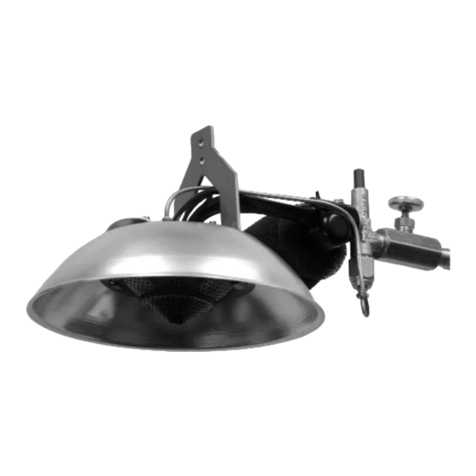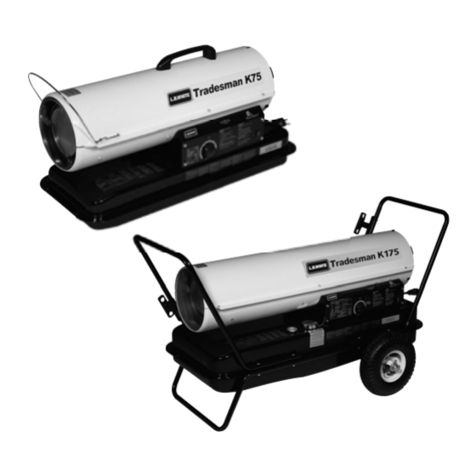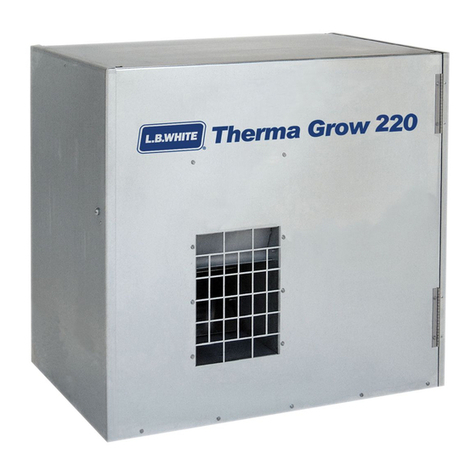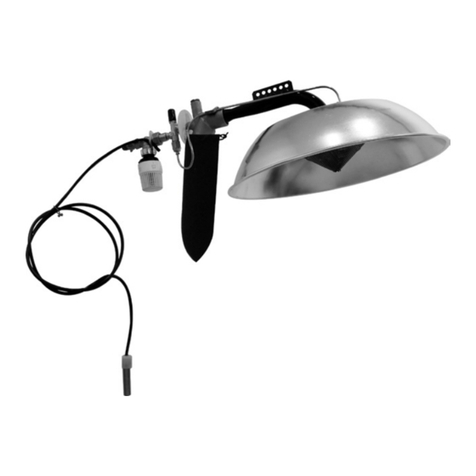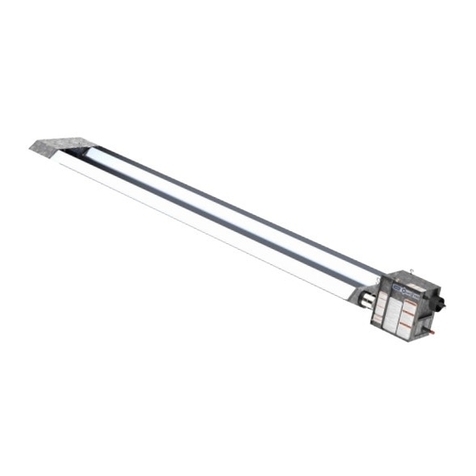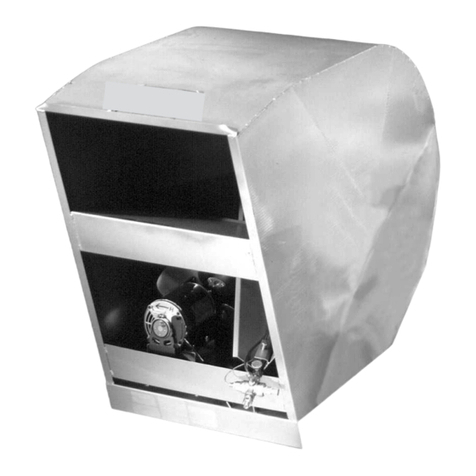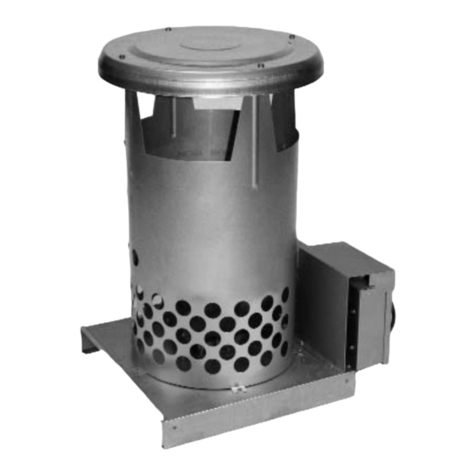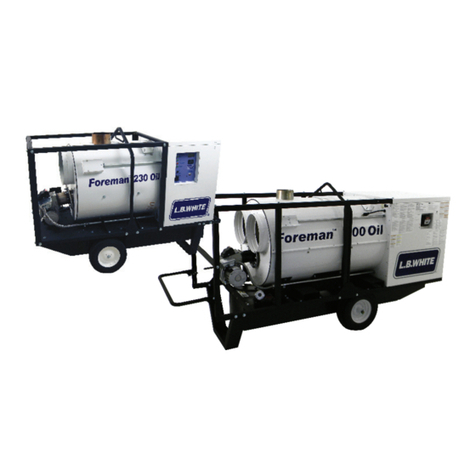
Guardian Brood Heaters
Owner’s Manual • Guardian
7
Ŷ/3*KDVDGLVWLQFWLYHRGRU/HDUQWRUHFRJQL]H
these odors. (Reference Fuel Gas Odor and Odor
Fading sections above.
Ŷ,I\RXKDYHQRWEHHQSURSHUO\WUDLQHGLQUHSDLUDQG
service of LPG and natural gas brood heaters, then
do not attempt to light the heater, perform service
or repairs, or make any adjustments to the brood
heater on the fuel system.
Even if you are not properly trained in the service and
repair of the brood heater, ALWAYS be consciously
aware of the odors of LPG and natural gas.
Ŷ$SHULRGLFVQLIIWHVWDURXQGWKHEURRGKHDWHURUDW
the brood heater’s joints; i.e. hose, connections,
etc., is a good safety practice under any conditions.
If you smell even a small amount of gas, CONTACT
YOUR FUEL GAS SUPPLIER IMMEDIATELY. DO
NOT WAIT!
1. Do not attempt to install, repair, or service this
brood heater or the gas supply line unless you
have continuing expert training and knowledge of
gas heaters.
4XDOL¿FDWLRQVIRUVHUYLFHDQGLQVWDOOD-
tion of this equipment are as follows:
D7REHDTXDOL¿HGJDVEURRGKHDWHUVHUYLFHSHUVRQ
\RXPXVWKDYHVXI¿FLHQWWUDLQLQJDQGH[SHULHQFH
WRKDQGOHDOODVSHFWVRIJDV¿UHGEURRGKHDWHU
installation, service and repair. This includes the
task of installation, troubleshooting, replacement
of defective parts and testing of the brood heater.
You must be able to place the brood heater into a
continuing safe and normal operating condition.
You must completely familiarize yourself with each
model brood heater by reading and complying with
the safety instructions, labels, Owner’s Manual,
etc., that is provided with each heater.
E7REHDTXDOL¿HGJDVLQVWDOODWLRQSHUVRQ\RXPXVW
KDYHVXI¿FLHQWWUDLQLQJDQGH[SHULHQFHWRKDQGOH
all aspects of installing, repairing and altering gas
lines, including selecting and installing the proper
equipment, and selecting proper pipe and tank size
to be used. This must be done in accordance with
all local, state and national codes as well as the
manufacturer’s requirements.
2.All installations and applications of L.B. White
brood heaters must meet all relevant local, state
and national codes. Included are LPG, natural gas,
electrical, and safety codes. Your local fuel gas
VXSSOLHUDORFDOOLFHQVHGHOHFWULFLDQWKHORFDO¿UH
department or similar government agencies, or
your insurance agent can help you determine code
requirements.
3. Do not move, handle, or service the brood heater
while in operation or connected to a power or fuel
supply.
4. This brood heater may be installed in areas
subject to washdown. This brood heater may only
be washed on the external case assembly—see
Cleaning Instructions. Do not wash the interior
of the brood heater. Use only compressed air,
soft brush or dry cloth to clean the interior of the
brood heater and it’s components.After external
washdown, do not operate this brood heater until
it is completely dry. In any event, do not operate
the brood heater for at least one hour after external
washdown.
5. For safety, this brood heater is equipped with a
manual reset high-limit switch and an air proving
switch. Never operate this brood heater with any
safety device that has been bypassed. Do not op-
erate this brood heater unless all of these features
are fully functioning.
6. Do not operate the brood heater with its door open
or panel removed.
7. Do not locate fuel gas containers or fuel supply
hoses anywhere near the blower outlet of the
brood heater.
8. Do not block air intakes or discharge outlets of the
brood heater. Doing so may cause improper com-
bustion or damage to brood heater components
leading to property damage or animal loss.
9. The hose assembly shall be visually inspected on
an annual basis. If it is evident there is excessive
abrasion or wear, or if the hose is cut, it must be
replaced prior to the brood heater being put into
operation. The hose assembly shall be protected
from animals, building materials, and contact with
hot surfaces during use. The replacement hose
DVVHPEO\VKDOOEHWKDWVSHFL¿HGE\WKHPDQXIDF-
turer. See parts list.
Attention - Critical
Points to Remember!
